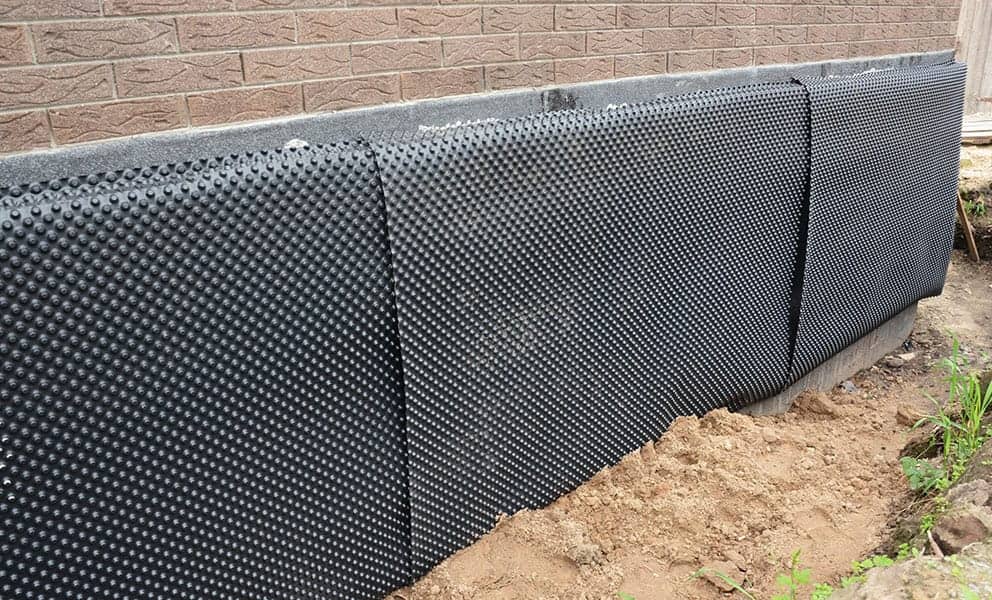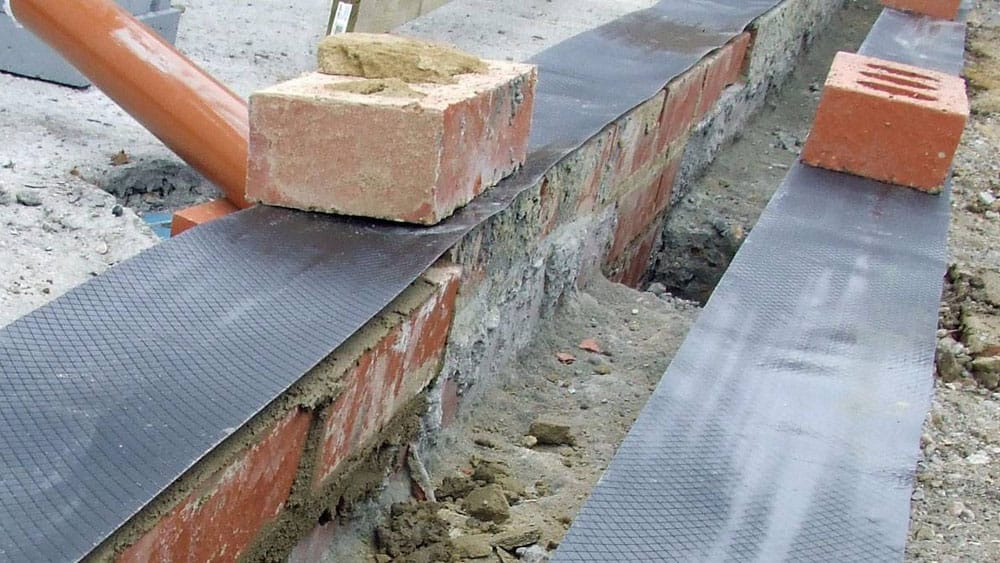Property manager's handbook to damp proofing newcastle solutions
Discovering the Different Strategies and Solutions for Effective Damp Proofing
Dampness in buildings poses significant difficulties to both architectural integrity and indoor air quality. Numerous techniques and options have actually emerged to combat this pervasive problem. From typical damp-proof membranes to cutting-edge chemical therapies, each technique supplies special benefits. Recognizing these choices is vital for efficient dampness control. Selecting the ideal option depends on particular building conditions and needs, prompting more exploration into the most reliable moist proofing methods available.
Understanding the Sources Of Moisture
Although dampness can arise from numerous resources, recognizing these causes is important for efficient remediation. Typically, moisture originates from 3 primary sources: increasing damp, penetrating wet, and condensation. Rising wet happens when groundwater takes a trip up-wards via porous products, such as brick or rock, usually as a result of a lack of an effective barrier (mould removal newcastle). Permeating wet is normally brought on by exterior elements, consisting of roofing system leaks, damaged rain gutters, or harmed walls, enabling water to penetrate a property. Condensation, on the other hand, results from excess dampness in the air, usually intensified by inadequate ventilation and temperature level differences, bring about water beads basing on surfaces. Recognizing these underlying issues is crucial, as each sort of moisture calls for a tailored method for remediation. Proper analysis helps in establishing one of the most efficient solutions, ultimately securing the structural integrity of a building and improving indoor air quality
Conventional Damp-Proof Membranes

Chemical Damp-Proofing Solutions
Chemical damp-proofing options use an ingenious technique to protecting against dampness breach in buildings. These approaches usually entail the application of fluid chemicals that permeate stonework and create an obstacle versus climbing damp. Typically utilized chemicals consist of silanes, siloxanes, and other water-repellent agents that respond with surface area products to produce a hydrophobic layer.The application procedure normally needs drilling openings right into the wall surfaces, infusing the chemical service, and allowing it to heal. This method is particularly beneficial for older structures where conventional damp-proof membranes might be not practical. Chemical damp-proofing can be less turbulent and extra cost-efficient than substantial remodelling projects.While efficient, these solutions depend on correct application and environmental problems for peak efficiency. mould removal newcastle. Routine upkeep and monitoring are crucial to ensure the longevity of the damp-proofing therapy. In general, chemical damp-proofing stands for a versatile alternative for protecting structures against moisture-related damages
Dental Caries Wall Building And Construction Techniques
Tooth cavity wall building and construction techniques use various benefits, especially in dampness control and energy effectiveness. By incorporating an air space in between two layers of masonry, these walls efficiently mitigate water ingress while improving insulation. This mix not only secures frameworks from dampness but likewise contributes to lowered power usage.
Benefits of Tooth Cavity Walls
When thinking about efficient moist proofing methods, the advantages of cavity walls stick out plainly. Tooth cavity wall surfaces include 2 separate layers, creating an air space that successfully lowers dampness infiltration. This design lessens the danger of moisture, as the outer wall functions as an obstacle versus rainfall and water ingress. Furthermore, dental caries walls enhance thermal insulation, which contributes to power performance by lowering warmth loss. They likewise offer sound insulation, assisting to create a quieter indoor setting. The air void permits for air flow, which helps in wetness control and decreases the possibility of mold and mildew development. These benefits not only boost the overall convenience of a structure yet additionally add to its longevity and structural honesty.
Wetness Control Methods
Efficient dampness control strategies are critical in tooth cavity wall building to guarantee long-lasting security versus dampness. One main approach involves the unification of weep holes, which help with water drain from the dental caries, stopping buildup. Furthermore, using breathable membranes can assist manage wetness degrees while allowing caught vapor to get away. Correct placement of insulation is likewise important, as it ought to not block drain courses. Furthermore, making certain that the outer fallen leaves of the dental caries wall are built with waterproof materials enhances overall longevity. Regular maintenance checks are necessary to identify any type of obstructions or damage early, protecting the structure's integrity. Inevitably, a combination of these strategies forms a durable defense versus moisture invasion in tooth cavity walls.
Insulation and Power Performance
Insulation plays a vital duty in boosting power effectiveness within tooth cavity wall building. By integrating insulating products, these wall surfaces produce a thermal barrier that decreases warm loss and decreases power consumption. Effective insulation not only aids preserve a stable interior temperature level however likewise reduces the threat of dampness, as it protects against condensation within the wall surface tooth cavity. Various strategies, such as using stiff foam boards or mineral wool, can be employed to attain ideal insulation performance. Additionally, correct setup is vital to guarantee that voids and voids are lessened, which can otherwise compromise power effectiveness. Ultimately, a well-insulated dental caries wall contributes greatly to total sustainability and reduces cooling and heating expenses for house owners.
Exterior Damp Proofing Approaches
Outside wet proofing techniques are crucial for securing structures from wetness infiltration. 2 reliable techniques consist of the application of water-proof membranes and the installation of French drains. These services aid alleviate water accumulation and protect the honesty of buildings.
Waterproof Membrane Application
While various techniques exist for stopping dampness ingress, the application of water resistant membranes stays an extremely efficient exterior damp proofing technique. These membranes are generally made from materials such as polyethylene, rubber, or changed asphalt, offering a durable obstacle against water infiltration. The installation process entails using the membrane to the exterior surfaces of structures or wall surfaces, making sure complete protection to prevent leaks. Appropriate attachment and securing at joints are critical to optimizing performance. Water-proof membranes can be applied in different forms, including liquid coatings and sheet membranes, permitting flexibility based upon the details demands of the framework. This technique not only protects buildings from wetness yet additionally improves their durability and structural honesty.
French Drain Installment
One reliable method for taking care of groundwater and avoiding moisture accumulation around a structure's structure is the installation of a French drainpipe. This water drainage system includes a trench filled with crushed rock and a perforated pipeline that redirects surface area water far from the foundation. Proper installation calls for cautious preparation, making certain that the drain slopes far from the structure to facilitate ideal water circulation. Furthermore, the location of the drain is essential; it needs to be placed in areas prone to merging or excess wetness. Regular upkeep, consisting of cleaning debris from the crushed rock and making sure the pipe remains unhampered, is essential for lasting effectiveness. Inevitably, a well-installed French drainpipe can substantially decrease the threat of water-related problems in basements and structures.
Inside Waterproofing Techniques
Interior waterproofing methods are essential for securing a building's inside from wetness seepage and possible water damages. These approaches commonly involve the application mould treatment newcastle of specific products and techniques created to produce a dampness obstacle within the structure. One typical strategy is making use of water resistant finishings or sealers on walls and floorings, which prevent dampness from permeating surfaces.Additionally, setting up interior drainage systems, such as sump pumps, can efficiently take care of water buildup in basements and crawl spaces. An additional method involves using vapor barriers, which are set up to hinder dampness activity from the ground right into living spaces.Moreover, attending to any kind of cracks or spaces in wall surfaces or structures with appropriate sealants ensures a comprehensive protection versus water intrusion. By executing these interior waterproofing methods, homeowner can significantly minimize the danger of mold and mildew development, architectural damage, and various other moisture-related concerns. Correct implementation of these techniques is vital for long-lasting security and building integrity.
Regular Upkeep and Inspection Practices
Regular upkeep and inspection techniques are crucial for assuring the lasting effectiveness of damp proofing services in any type of building. Routine checks allow homeowner to identify early signs of dampness breach, such as peeling paint, mold and mildew development, and moldy smells. These indicators can signify underlying problems that call for prompt attention.Inspections need to be performed at the very least each year, concentrating on vulnerable locations like basements, creep spaces, and outside walls. Throughout these evaluations, homeowner ought to examine sealers, drain systems, and ventilation to validate they work correctly.Additionally, maintaining downspouts and seamless gutters is essential, as clogged up systems can cause water buildup near the structure. Carrying out a regular upkeep schedule, together with prompt repair work, can substantially extend the life expectancy of damp proofing measures and shield the structural stability of the structure. Proactive actions eventually add to the total health and safety and security of the living environment.
Frequently Asked Concerns
Exactly How Long Does Damp Proofing Generally Last?
The duration of wet proofing efficiency varies, commonly lasting in between 20 to 50 years. Variables such as application quality, environmental conditions, and upkeep techniques considerably influence the long life of the moist proofing therapy.

Can I Damp Proof My Home Myself?
The private considered the usefulness of DIY damp proofing. With correct research study and the right products, it is possible. They additionally acknowledged the value of specialist support to ensure lasting efficiency and stop future problems.
What Are the Indicators of Inefficient Damp Proofing?
Signs of inadequate wet proofing consist of relentless musty odors, noticeable mold and mildew development, peeling off paint, damp spots on walls, and timber decay - mould treatment newcastle. Home owners ought to resolve these issues quickly to avoid more damage and health concerns
Does Damp Proofing Affect Indoor Air Top Quality?

How Much Does Expert Damp Proofing Expense?
Professional moist proofing expenses vary substantially, generally varying from $1,000 to $5,000 depending upon the building's size, the extent of the wet issue, and picked techniques. Each situation calls for a tailored analysis for accurate pricing. Typically, moisture stems from 3 key sources: rising damp, permeating moist, and condensation. When thinking about reliable wet proofing approaches, the benefits of cavity walls stand out prominently. Outside moist proofing techniques are essential for protecting structures from moisture infiltration. While various methods exist for stopping wetness access, the application of water resistant membranes stays a very reliable exterior moist proofing technique. Indications of inefficient damp proofing include consistent musty odors, visible mold and mildew growth, peeling paint, wet patches on walls, and wood decay.